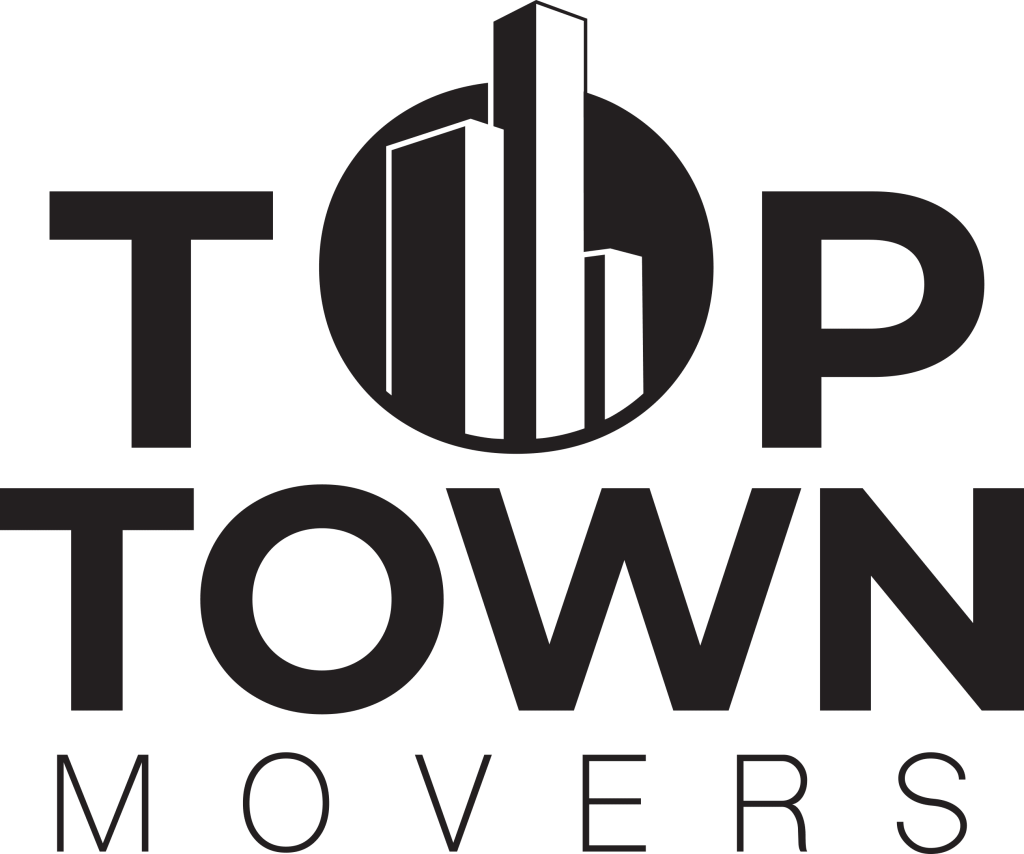Moving to a new country is an exciting, life-altering adventure, filled with promise and new opportunities. For those setting their sights on Canada – a land known for its stunning natural beauty, diverse culture, welcoming communities, and vibrant economy – the journey begins long before you set foot on Canadian soil. One of the most critical and often overwhelming aspects of this transition is deciding what to pack. What essentials should accompany you? What can be left behind? And how can you ensure your cherished belongings make the journey safely?
This comprehensive guide, brought to you by Top Town Movers – your trusted moving experts in Ontario and the North York area – will walk you through the intricacies of packing for your move to Canada. While we specialize in local and inter-provincial moves within Ontario, we understand the unique challenges faced by newcomers. Our insights on what to pack when moving to canada will help you prepare your international shipment, ensuring a smoother start to your Canadian life.
- Learn More >>>> long distance moving
A Comprehensive Guide for a Smooth Start with Top Town Movers
Understanding the Basics of Moving to Canada
Before you even start packing, it’s crucial to understand a few fundamental aspects of Canadian immigration and customs:
- Immigration Status: Your immigration status (e.g., permanent resident, temporary worker, international student, returning Canadian citizen) will influence what you can import and whether duties apply.
- Customs Declaration: You must declare all goods you are bringing into Canada, whether with you or in a separate shipment. Failure to declare can lead to penalties, seizures, or delays.
- B4 Form (Personal Effects Accounting Document): This is a critical document. You’ll list all goods you’re bringing in, including items arriving later. It’s vital to complete this accurately and present it upon your initial entry into Canada, even if your belongings are still en route.
- “Goods to Follow” List: This is an extension of your B4 form, detailing items being shipped separately. Keep a meticulously organized, numbered list of these items.
- Prohibited/Restricted Items: Canada has strict regulations on certain items (firearms, certain foods, plants, controlled substances, some cultural artifacts). Research these thoroughly.
- “Used” vs. “New” Goods: Generally, you can import “used” personal and household effects duty-free. “New” items may be subject to duties and taxes. Keep receipts for new items.
Consult the official Canada Border Services Agency (CBSA) website for the most up-to-date and accurate information on customs and import regulations.
- Learn More >>>> torento moving
What to Pack: A Strategic Approach
The key to packing for an international move is strategic prioritization. You’ll need essentials for your immediate arrival, and then decide what’s worth shipping versus buying new.
Category 1: Carry-On/Essentials (Your “Arrival Kit”)
This bag or small suitcase should be accessible immediately upon arrival, ideally with you on the plane.
- Crucial Documents:
- Passport and valid Canadian visa/eTA/PR card.
- Letters of Introduction (e.g., for Permanent Residency Confirmation of Permanent Residence, study permit, work permit).
- Original birth certificates, marriage certificates, academic transcripts, professional licenses.
- Medical records, vaccination records, prescriptions (with original bottles/labels).
- Driving license (international driving permit if applicable).
- Copies of all important documents (digital and physical backups).
- Contact information for family, friends, and your Canadian contacts (e.g., employer, school, landlord).
- Your B4 form and “Goods to Follow” list (if applicable), completed and ready.
- Financials:
- Some Canadian currency for immediate expenses.
- Credit/debit cards (ensure they work internationally and notify your bank of your travel).
- Statements or proof of funds if required by immigration.
- Immediate Needs:
- Basic toiletries (toothbrush, toothpaste, small shampoo).
- Prescription medications (enough for several weeks, with original labels and doctor’s note).
- A change of clothes or two.
- Comfortable shoes.
- Adapter for electronics (Canada uses Type A/B, 120V).
- Mobile phone and charger.
- Small first-aid kit.
- Snacks/water for the journey.
- Entertainment for the flight (books, headphones).
- Small comfort items for children if applicable.

- Learn More >>>>Long Distance Moving Toronto
Category 2: Checked Luggage (For First Few Weeks)
These are items you’ll need before your main shipment arrives, usually within the first 2-4 weeks.
- Clothing:
- Layers! Canada’s climate varies dramatically by region and season. Even if arriving in summer, pack a light jacket. If arriving in fall/winter, pack warm layers, a decent coat, gloves, and a hat.
- Enough everyday outfits for a few weeks (jeans, t-shirts, sweaters).
- Business attire if you have immediate job interviews or work.
- Comfortable sleepwear.
- Undergarments and socks.
- Footwear:
- Comfortable walking shoes.
- Depending on the season, waterproof boots (winter) or lighter shoes (summer).
- Basic Toiletries & Personal Care:
- Enough of your preferred brands to last until you can shop locally.
- Makeup, hair products, etc.
- Small Personal Items:
- A favourite book or two.
- Small toys/games for children.
- Chargers for all electronics.
- Basic cooking utensils if you plan on immediate self-catering and don’t want to buy new right away.
- Bedding/Towels (Optional): A single set of sheets and a towel per person can be very comforting if your main shipment is delayed.
- Learn More >>>>Downtown Toronto Moving
Category 3: Shipped Household Goods (The Bulk of Your Belongings)
This is where Top Town Movers’ expertise comes in, even for international moves. While we don’t handle the ocean freight, we can help you prepare your belongings for international shipping and manage your local move once they clear customs in Ontario.
What to Ship (Consider Value, Sentimental Attachment, and Replacement Cost):
- Furniture:
- Keep: High-quality, sentimental, or expensive furniture that would be costly to replace. If it’s antique, consider professional crating.
- Leave/Sell: Bulky, inexpensive, or easily replaceable furniture. Canada has a thriving furniture market (IKEA, Leon’s, The Brick, Structube, used furniture stores). Factor in shipping costs vs. buying new.
- Kitchenware:
- Keep: High-quality cookware, knives, bakeware, small appliances you frequently use and cherish (e.g., stand mixer, espresso machine).
- Leave/Sell: Basic dish sets, cheap glassware, worn-out pots. These are easily replaceable.
- Clothing:
- Keep: All good quality, seasonal clothing that fits well. Remember Canada’s diverse climate – pack for all four seasons if space allows. High-quality winter gear (parkas, snow boots) can be expensive in Canada.
- Leave/Donate: Worn-out clothes, items you haven’t worn in years.
- Linens:
- Keep: Good quality bedding, towels, curtains.
- Leave/Donate: Old, worn-out sets.
- Books:
- Keep: Valued books, rare editions, textbooks.
- Consider Digitizing/Donating: Large collections of common paperbacks can add significant weight.
- Electronics:
- Keep: Laptops, tablets, cameras, e-readers.
- Consider: TVs, large speakers, gaming consoles. Canada uses 120V, 60Hz. Ensure your electronics are compatible or purchase voltage converters. Some electronics (like older TVs) may not be compatible with Canadian broadcasting standards.
- Personal Items & Mementos:
- Keep: Photos, albums, family heirlooms, sentimental artwork, personal hobbies (musical instruments, sports equipment). These are irreplaceable.
- Tools & Equipment:
- Keep: High-quality tools, specialized equipment for hobbies or professions.
- Clean Thoroughly: Ensure any tools that have touched soil are meticulously cleaned to avoid agricultural restrictions.
- Children’s Items:
- Keep: Favorite toys, books, sentimental items.
- Research Safety Standards: Car seats, cribs, and some other baby items must meet Canadian safety standards. Often, it’s safer and easier to purchase these new in Canada.
- Learn More >>>>Etobicoke Moving
What NOT to Pack (or Pack with Extreme Caution)
- Prohibited Items:
- Firearms and weapons (unless you have specific permits and declare them).
- Controlled substances (drugs, narcotics).
- Hate propaganda.
- Child pornography.
- Endangered species (products made from them).
- Certain foods (fresh fruits, vegetables, meats, dairy products without proper permits).
- Certain plants and plant products.
- Restricted Items (Require Permits/Declarations):
- Alcohol and tobacco (duty may apply, quantity limits).
- Currency over $10,000 CAD.
- Medications (ensure you have prescriptions and original packaging).
- Items that are Cheaper to Buy New:
- Cleaning supplies, basic toiletries, inexpensive kitchen gadgets.
- Large quantities of non-perishable food items that are readily available in Canada.
- Outdated electronics that won’t work with Canadian voltage/standards.
- Extremely Valuables/Irreplaceable Items: While you might ship some valuable items, consider carrying extremely high-value jewelry, critical documents, and irreplaceable sentimental items with you in your carry-on.
- Hazardous Materials: Flammable liquids, aerosols, paints, solvents, batteries (unless small and contained within devices), propane tanks. Moving companies have strict regulations on these.
- Perishables: Food that can spoil, plants that may not be allowed due to pest control regulations.
- Learn More >>>>Markham Moving
Packing Tips for Your International Shipment (What Top Town Movers Recommends)
While Top Town Movers primarily handles moves within Ontario, our experience with packing for large-scale relocations provides invaluable advice for your international shipment:
- Start Early: International packing is a huge undertaking. Begin decluttering and sorting months in advance.
- Declutter Ruthlessly: Be realistic. If you haven’t used it in a year, or it’s easily replaceable and inexpensive, consider selling, donating, or discarding it. Less to ship means lower costs.
- Invest in Quality Packing Materials: Use sturdy, double-walled boxes. Don’t skimp on bubble wrap, packing paper, and strong packing tape. Your items will endure a long journey.
- Pack Systematically:
- Pack room by room.
- Label boxes clearly on multiple sides with:
- Contents (brief description).
- Room destination (e.g., “Kitchen,” “Bedroom 2”).
- “Fragile” if applicable.
- A sequential number.
- Create a detailed inventory list for your own records, matching the box numbers. This is crucial for your “Goods to Follow” declaration.
- Separate “Goods to Follow” Items: Ensure items intended for your main shipment are clearly distinguished from items you’re taking with you.
- Disassemble Furniture: If shipping furniture, disassemble it (beds, tables, chairs). Bag and label all hardware securely.
- Protect Fragile Items: Wrap each fragile item individually with bubble wrap or packing paper. Use plenty of cushioning material in boxes. Pack plates vertically rather than stacking them.
- Secure Valuables: For items you are shipping but are still valuable (e.g., a cherished musical instrument), consider professional crating.
- Appliances: Clean and dry all appliances thoroughly. Secure any moving parts.
- Electronics: Back up all data. Pack electronics in their original boxes if possible. If not, use anti-static bubble wrap and sturdy boxes.
- Heavy Boxes: Use smaller boxes for heavy items like books. Larger boxes should be reserved for lighter, bulky items (linens, pillows).
- Consider Professional Packing Services: While you’re preparing for an international move, Top Town Movers can provide expert packing services for your Ontario-bound belongings once they clear customs or if you’re consolidating goods from a temporary Ontario residence. For the initial international leg, many international movers offer professional packing, which is highly recommended for delicate or valuable items.
- Learn More >>>>East York Moving
Your Arrival in Ontario: Top Town Movers is Here for You
Once your international shipment arrives in Ontario and clears customs, the next critical step is getting it to your new home. This is where Top Town Movers, your residential moving experts in North York and across Ontario, steps in.
We can assist with:
- Local Delivery from Port/Warehouse: Transporting your cleared shipment from the customs warehouse or port (e.g., Toronto, Montreal, or Vancouver if shipped west) directly to your new residence in North York or anywhere in Ontario.
- Unloading and Placement: Our professional movers will carefully unload your boxes and furniture and place them in their designated rooms, making the unpacking process much easier.
- Furniture Reassembly: We can reassemble any furniture that was disassembled for shipping.
- Junk Removal: Once unpacked, we can help with the disposal of excess packing materials and any unwanted items.

































